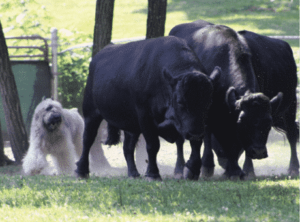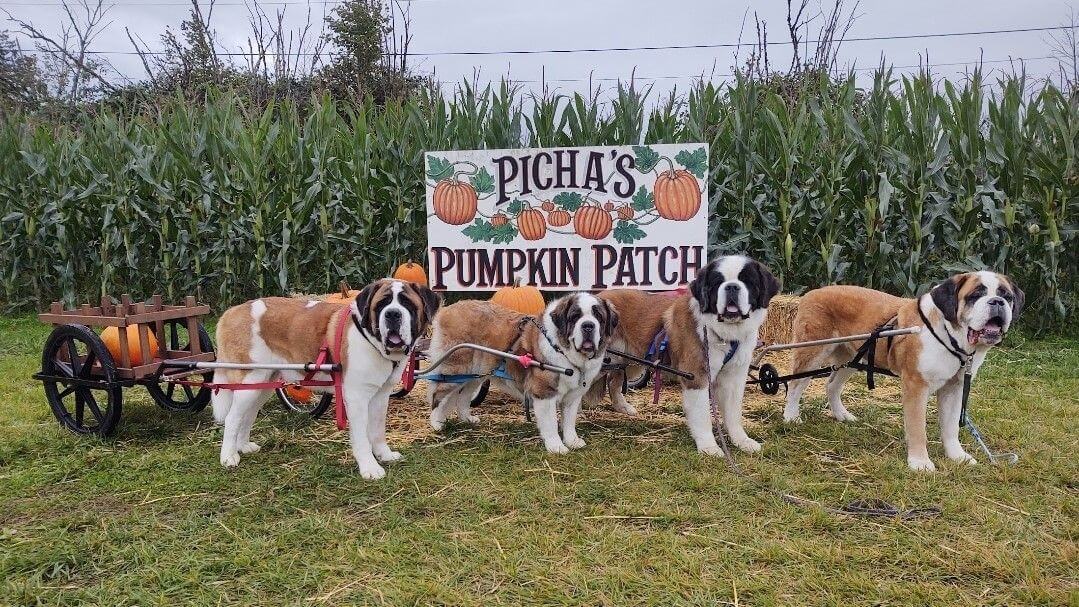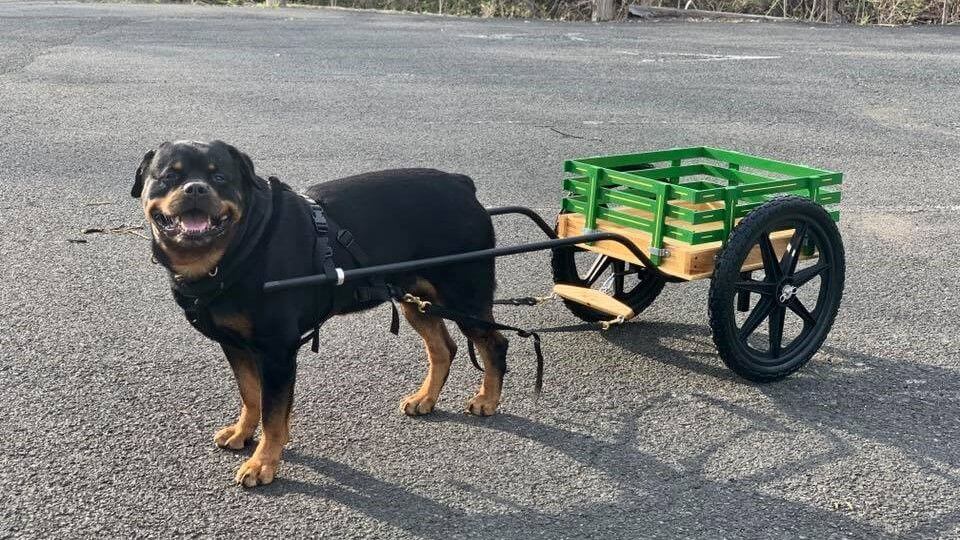
Bouvier des Flandres: A Farmer’s Dog
Bouvier des Flandres: A Farmer’s Dog | Let’s take a trip back in time. Let’s go back well over a hundred years to the country of Belgium
Home » Dog Sports » Drafting and Carting

Drafting and Carting are dog sports in which dogs are trained to pull carts, wagons, or other wheeled vehicles. These activities are not just a form of physical exercise but also serve as a mental challenge and a bonding opportunity for dogs and their handlers. While historically rooted in practical work, today they are enjoyed as competitive and recreational activities.
The key piece of equipment in both Drafting and Carting is the harness. It is essential that the harness fits properly to ensure the dog’s comfort and to prevent injuries. There are various types of harnesses used, including the Siwash harness which allows for free movement of the dog’s shoulders, and the more traditional draft harness which provides a padded collar for the dog to lean into while pulling.
The vehicles used in these sports also vary. Carts typically have two wheels and may be used for lighter loads or displays, while wagons with four wheels are used for heavier loads. The choice of vehicle often depends on the specific activity or competition.
While some breeds have a historical connection to Drafting and Carting, such as the Bernese Mountain Dog, Bouvier des Flandres, and Rottweiler, many breeds and mixed breeds can participate in these activities today. The suitability of a dog for Drafting or Carting can depend more on a dog’s size, strength, and temperament than on its specific breed.
The benefits of participating in Drafting and Carting extend beyond physical exercise. These activities encourage discipline and focus in dogs and strengthen the bond between the dog and the handler. They also provide mental stimulation, as each dog learns to navigate courses and respond to commands while pulling a load.

Traditionally, dogs were used for pulling carts and wagons, particularly in agricultural and rural settings. This practice was not only common in farming communities for transporting goods like milk, vegetables, and firewood, it was also employed in urban areas for tasks such as delivering goods and even pulling small passenger vehicles. The use of dogs for such tasks was especially prevalent in European countries.
As technology advanced and the need for dogs in laborious tasks diminished, the focus shifted from work to sport. People began to recognize the value of these activities in providing physical exercise and mental stimulation for dogs. The transition from a work-based activity to a sport was also influenced by the desire to preserve and honor the historical roles of these dogs.
With the acknowledgement of Drafting and Carting as a sport, formal rules and standards were eventually developed. Various breed clubs began to host competitions, setting up courses with specific challenges to test the skills of the dogs and their handlers. These competitions often mimic traditional tasks, requiring dogs to navigate obstacles and demonstrate control and discipline while pulling a cart or wagon.
Over time, the equipment used in Drafting and Carting has evolved. Modern harnesses and carts are designed with the dog’s comfort and safety in mind, and training techniques have advanced to ensure humane and effective preparation for these activities.
Drafting and Carting have gained popularity worldwide, with many breeds participating in these activities beyond those traditionally associated with pulling tasks. These sports are celebrated for their ability to engage dogs in a fulfilling and enjoyable way, showcasing their strength, intelligence, and willingness to work alongside their human companions.


Bouvier des Flandres: A Farmer’s Dog | Let’s take a trip back in time. Let’s go back well over a hundred years to the country of Belgium
"*" indicates required fields
Showsight Magazine–the world’s most influential purebred dog publication since 1992. Each issue reaches a global audience dedicated to preserving the history and health of purpose bred dogs. Filled with award-winning editorial focused on news and insights from the dog show community, top breeders, handlers, AKC Judges, and more!